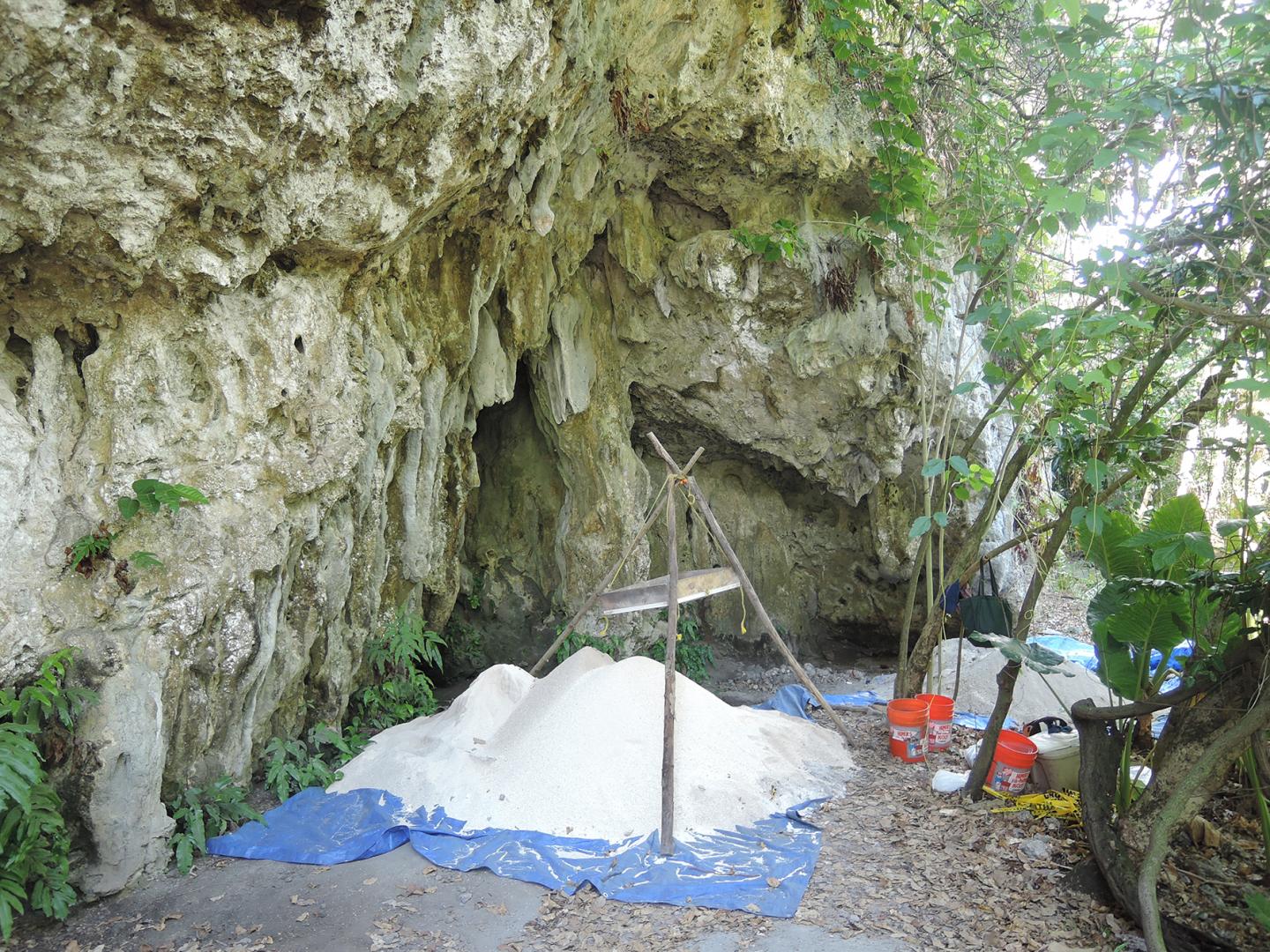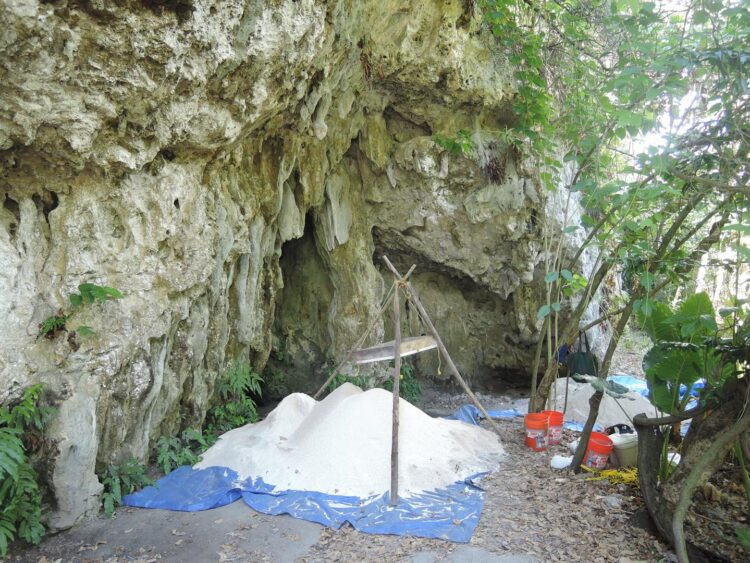Researchers find that present-day Mariana Islanders’ ancestry is linked to the Philippines

Credit: Hsiao-chun Hung
To reach the Mariana Islands in the Western Pacific, humans crossed more than 2,000 kilometres of open ocean, and around 2,000 years earlier than any other sea travel over an equally long distance. They settled in the Marianas around 3,500 years ago, slightly earlier than the initial settlement of Polynesia.
“We know more about the settlement of Polynesia than we do about the settlement of the Mariana Islands”, says first author Irina Pugach, a researcher at the Max Planck Institute for Evolutionary Anthropology in Leipzig, Germany. The researchers wanted to find out where people came from to get to the Marianas and how the ancestors of the present Mariana Islanders, the Chamorro, might be related to Polynesians.
To address these questions the researchers obtained ancient DNA data from two skeletons from the Ritidian Beach Cave site in northern Guam, dating to around 2,200 years ago. “We found that the ancestry of these ancient skeletons is linked to the Philippines”, says Pugach. “These findings strengthen the picture that has emerged from linguistic and archaeological studies, pointing to an Island Southeast Asia origin for the first settlers of the Marianas”, says co-author Mike T. Carson, an archaeologist at the Micronesian Area Research Center at the University of Guam.
“We also find a close link between the ancient Guam skeletons and early Lapita individuals from Vanuatu and Tonga in the Western Pacific region”, adds Pugach. “This suggests that the Marianas and Polynesia may have been colonized from the same source population, and raises the possibility that the Marianas played a role in the eventual settlement of Polynesia.”
The researchers point out that while the new results provide interesting new insights, they are based on only two skeletons that date from around 1,400 years after the first human settlement in Guam. “The peopling of Guam and the settlement of such remote archipelagos in Oceania needs further investigation”, says senior author Mark Stoneking of the Max Planck Institute for Evolutionary Anthropology.
###
Original publication:
Irina Pugach, Alexander Hübner, Hsiao-chun Hung, Matthias Meyer, Mike T. Carson, Mark Stoneking
Ancient DNA from Guam and the peopling of the Pacific
PNAS, 22 December 2020
Contact:
Dr. Irina Pugach
Max Planck Institute for Evolutionary Anthropology, Leipzig
+49 341 3550-778
[email protected]
Prof. Dr. Mark Stoneking
Max Planck Institute for Evolutionary Anthropology, Leipzig
+49 341 3550-502
[email protected]
Dr. Mike T. Carson
Micronesian Area Research Center, University of Guam
[email protected]
Media Contact
Sandra Jacob
[email protected]
Related Journal Article
http://dx.





